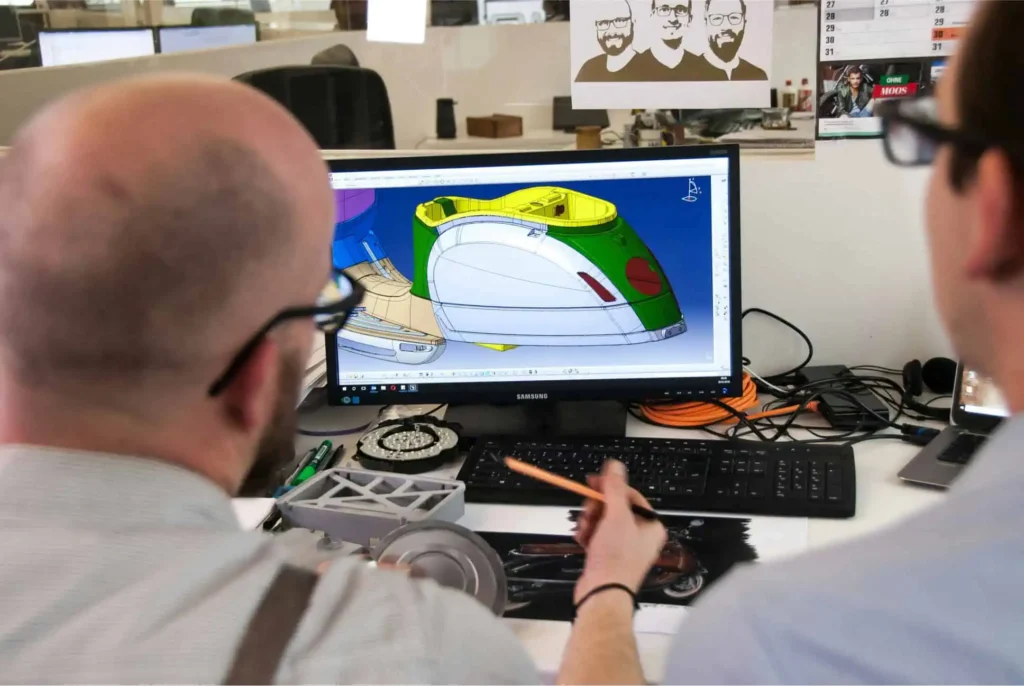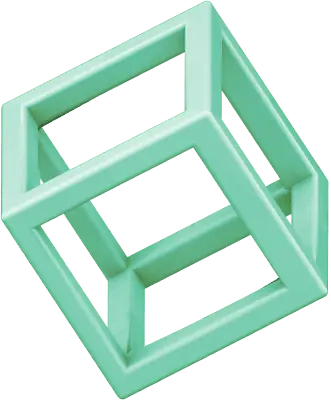
Image credit: Unsplash
Creating art in the digital realm has transcended traditional boundaries. It evolved into a complex yet fascinating world where imagination meets technology. As we dive into this intriguing universe, the significance of having adequate tools and resources cannot be overstated. Hence, this article has been compiled to address the essential 3D resources for digital artists.
Through this guide, you can dive into the variety of options that bring your visionary concepts to life. Hence, whether you are a professional or a curious novice, this complication offers a treasure trove of tools. However, it also gives insightful tips to enhance your 3D designs and process.
Learn how to efficiently work on your Mac
Some simple tricks will make work on your devices smooth and hassle-free. When we switch from Windows to iOS, there is confusion about how Macbook change mouse scroll direction. There are several ways in which you can control the settings of the mousepad on your Mac, like changing the scrolling speed or changing the scroll direction using an Automator. You can also change the scroll direction using Terminal.
Core Components of a 3D Design Toolkit
For anyone who is into 3D design, the toolkit that they have significantly influences their creative process and final output. Your complete toolkit includes both software and hardware components that cater to your digital needs.
Software Solutions for 3D Design
When it comes to professional digital art software, Autodesk Maya is an incredible tool. It supports the creation of complex characters and vast worlds, making it the preferred choice for many Hollywood professionals. However, it comes with a higher price point due to its advancements and options offered.
On the other hand, if you are a beginner, you might want to opt for Cinema 4D. It offers a simple interface and is known for its stability and easy learning curve. It is a powerful yet accessible option for those starting their 3D animation journey.
Open-source options like Blender provide a versatile and cost-effective solution. It can do professional-grade work in 3D design, animation, and even video game creation despite being free. Hence, these aspects make it a popular choice for those who support the open-source movement.
Hardware Essentials for 3D Artists
First, you cannot be an excellent 3D artist without high-performance computing. That is because the complexity and detail of your process, including rendering and texturing, require high-speed memory and a good processor. Hence, a well-chosen CPU and sufficient RAM are fundamental to ensure smooth operation, especially when working with high-resolution textures and complex simulations.
Let’s not forget about graphics tablets and accessories. They are tools that offer you precision and control that a mouse cannot match. For example, tools like Wacom’s range of tablets are favored for their pressure sensitivity and ergonomic design.
Essential Software for 3D Artists
So, what software do digital artists use? The realm of possibilities is vast, with many options, making things quite confusing. From modeling to texturing, the choice of software can significantly impact the efficiency and quality of your work.
Modeling and Sculpting Tools
You can always resort to Autodesk 3DS Max or Maya, as they always come as highly recommended. Well, first, 3DS Max must receive its fair share of praise for its straightforward modeling process.
When it comes to Maya, on the other hand, it stands out for its proficiency in crafting complex character models and animation projects. It provides capabilities for simulating interactions with environmental elements, such as water and wind.
Also, we need to give credit to Rhino, for its incredible accuracy when it comes to sculpting curved surfaces. Hence, this aspect makes it perfect if you want to design vehicles and aircrafts. This feature is further enhanced by the integration of Grasshopper.
Texturing and Material Creation
For those engaged in texturing and creating materials, Photoshop will always stand out as a critical resource. Its prowess in photo manipulation is unmatched. This is a technique where multiple photos are merged to create detailed textures and realistic scenes.
Also, Krita and GIMP offer powerful features for image manipulation, with Krita providing over a hundred brushes and GIMP offering extensive retouching tools.
Animation and Rigging
Now, we will discuss animation and rigging software. Again, Maya shines through because of its incredible tools. It includes features that help you create detailed animations and realistic character movements. Its features for hair, fur, and interaction with natural elements are unreal. Additionally, 3DS Max has incredible character controls, skinning, and cloth simulations.
Enhancing Creativity with Plugins and Add-ons
Image credit: Unsplash
Tools for digital artists also extend beyond the software we mentioned above. For instance, the number of plugins and add-ons available deeply enhances your workflow, adds functionality, and allows you to gain access to extensive libraries.
For instance, when you are working within the Blender ecosystem, some of the best plugins include Gaffer. The reason is that it streamlines the lighting configuration process. Hence, it allows for the efficient management of multiple light sources, thereby facilitating the adjustment of settings. Also, RetopoFlow offers crucial support to artists’ tasks with preparing high-resolution models for animation by making the retopology process much easier and simpler.
On the other hand, if you’re working with UV mapping and texturing, then you can resort to the use of Magic UV and Textools. Both of them provide you with incredible control and enhanced productivity. As for those wanting to enrich their digital environments with books or interior scenes, BookGen creates books, which help you add depth to the realism of the scenes.
With plugins like Cargo, Maya users can enhance their 3D modeling and animation capabilities, providing access to a vast library of 3D models and materials. Redshift Renderer accelerates rendering with GPU power, Substance Painter Live Link brings real-time texturing, and BonusTools extends Maya’s functionality with additional scripts and tools.
Learning Resources and Communities for Digital Artists
The array of tools for artists is not limited to those we previously outlined. To fully engage with the creative process, exploring courses, tutorials, and forums can be incredibly advantageous. Such resources offer opportunities to network, exchange ideas, and gain knowledge from other creators.
Online Tutorials and Courses
3DTotal presents a wide range of tutorials tailored to 3D applications such as 3DS Max, ZBrush, Maya, and V-Ray. They span everything from sculpting and modeling to texturing, lighting, and rendering. It serves as a source of knowledge and motivation for countless skilled artists. Despite announcing the upcoming closure of its free tutorials segment, it assures the persistence of freely accessible content, including chapters and sample sections.
Moreover, Skillshare and Udemy are platforms that feature a variety of Blender courses. Whether you want 3D character design, fluid simulation, or even architectural visualization, courses are designed to meet your needs. Those courses offer bite-sized lessons for more accessible learning, and Skillshare provides a free trial.
Forums for 3D Artists
Engaging in forums and social platforms is critical for artists looking to share their work, get feedback, and connect. Common platforms where 3D artists gather include CGSociety, ArtStation, and Blender Artists Community. These are great for artists of all levels who want to show their portfolios, participate in challenges, and exchange tips and techniques.
Advanced Techniques and Tips for 3D Artists
Beyond the best tools for artists, this section will discuss some advanced techniques and tips you can employ. These will elevate your work and place you on a different level of proficiency.
Photorealistic Rendering
One of the more advanced techniques digital artists use is photorealistic rendering. For this purpose, many advanced techniques and settings can enhance the realism of your models. For instance, V-Ray offers you guidance to optimize scenes through modeling, shading, lighting, and rendering processes. Yet, you must pay attention to managing polygon count for efficiency without compromising the quality. You can also ensure high-quality textures through trusted libraries like Chaos Cosmos.
Also, effective shading and lighting are paramount. Using depth of field to blur backgrounds, applying chromatic aberration for color fringing, and utilizing specular maps to define surface qualities can elevate realism. Also, textures and materials play a crucial role. Natural effects like cracks and strategic asymmetry can add a human touch and realism to the scenes.
Virtual Reality and Augmented Reality
When it comes to virtual reality and augmented reality, known software like Unity and Unreal Engine are pivotal in creating immersive experiences. These support real-time rendering capabilities, crucial for developing interactive and lifelike virtual environments. Using such features can enable you to build compelling experiences that are both visually stunning and functionally robust.
Conclusion
After this extensive discussion, you are well-equipped with the top design tools that will help you elevate your 3D experience. The fundamental aspect is understanding the essentials and ensuring you have a powerful computer to operate on.
Then, you move on to critical and essential software, from beginner-level to professional. This guide has covered everything you need to know about 3D tools. Understanding the capabilities and tools available within the field can facilitate the creation of immersive and interactive experiences.


